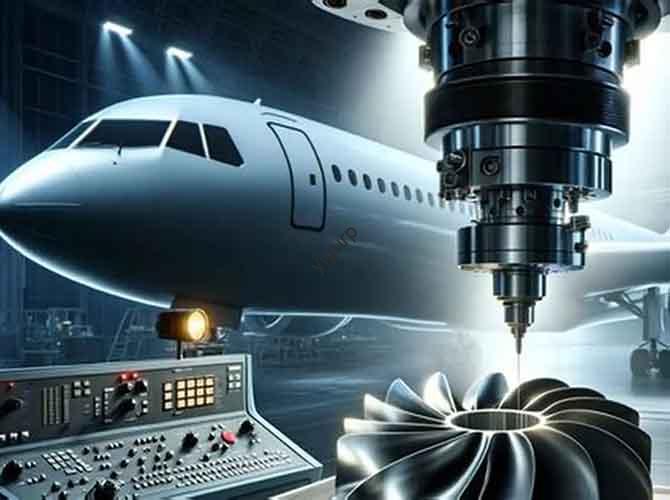En fabrication, le poids léger de l'aluminium, résistant à la corrosion, et ses propriétés malléables en font un choix de premier ordre pour d'innombrables produits. Mais pour libérer tout son potentiel, il faut un traitement avancé. Produit en aluminium CNC traitement délivre. This technology solves critical pain points like inconsistent precision, production lente, and limited design flexibility that plague traditional methods. Let’s dive into its core advantages, Applications du monde réel, and why it’s a game-changer for businesses.
1. Précision inégalée: Meeting the Strictest Tolerances
When it comes to aluminum parts, even tiny deviations can ruin performance—especially in aerospace or medical fields. CNC aluminum processing eliminates this risk with ultra-high accuracy and rigorous quality control.
Key Precision Metrics & Practices
| Aspect | Détails |
| Précision d'usinage | Atteint des tolérances aussi serrées que 0.01MM (plus mince qu'un cheveux humains) |
| Étapes de contrôle de la qualité | 1. Raw material inspection (Par exemple, alloy purity tests)2. In-process measurements with calipers or laser scanners3. Final checks via 3D/2D projectors |
| Réduction des erreurs | Computer-programmed toolpaths replace manual operation, cutting human error by 90%+ |
Real-World Need: Pourquoi la précision compte
Imagine an aerospace aluminum component for a jet engine. If it’s even 0.1mm off, it could cause vibrations or fuel inefficiencies. CNC aluminum processing ensures every part meets these strict standards—no exceptions.
2. Complex Shape Processing: Turning Designs Into Reality
Traditional machining struggles with intricate aluminum structures (Par exemple, hollow frames, rainures courbes). CNC aluminum product processing breaks these limits, thanks to multi-axis technology and advanced programming.
Usinage multi-axe: What It Is and Why It Helps
- 3-axe cnc: Handles basic 2D/3D shapes (Par exemple, plaques plates en aluminium).
- 4-axe cnc: Adds rotation for parts like cylindrical aluminum housings.
- 5-axe cnc: Moves in 5 instructions, enabling complex geometries (Par exemple, aerospace engine parts with angled holes).
Étude de cas: Shenzhen Weimate’s Capabilities
Shenzhen Weimate, a leading CNC manufacturer, usages 3, 4, and 5-axis machines to process aluminum parts. For a medical device client, they created a hollow aluminum surgical instrument handle—a design impossible with traditional methods. The 5-axis machine completed the part in one clamping, Couper le temps de production par 40% and ensuring uniform precision.
3. Diverse Surface Treatments: Boosting Performance and Aesthetics
Aluminum parts often need surface treatments to enhance durability or match brand aesthetics. CNC aluminum processing pairs seamlessly with a range of treatments, offering both function and customization.
Common Surface Treatments for CNC Aluminum Parts
| Type de traitement | Avantages clés | Applications idéales |
| Anodisation | Improves corrosion/wear resistance; adds colored/textured finishes | Coques pour appareils électroniques grand public, équipement extérieur |
| Pulvérisation | Offers wide color options; protects against scratches | Automotive aluminum trim, pièces de mobilier |
| Électroplaste | Increases surface gloss and hardness | High-end audio aluminum casings, bijoux |
Exemple: Personalized Consumer Electronics
A smartphone brand wanted aluminum backplates with a matte black finish and brand logo. CNC aluminum processing first shaped the plates, then anodized them to the exact color—delivering 10,000 identique, scratch-resistant units.
4. Production efficace: Faster Turnaround, Réduire les coûts
Pour les entreprises, time and money are critical. CNC aluminum product processing automates workflows and speeds up production, even for small batches or prototypes.
Production Efficiency Comparison: CNC VS. Usinage traditionnel
| Scène | CNC Aluminum Processing | Usinage traditionnel |
| Automation Level | 90%+ (auto tool change, speed adjustment) | 30–40% (heavy manual labor) |
| Prototype Delivery Time | 3–7 jours | 2–3 semaines |
| Batch Production Speed | 500+ simple aluminum parts/day | 150–200 parts/day |
Why This Solves Business Problems
Une startup nécessaire 50 aluminum prototypes for a new drone frame. Traditional machining would take 3 weeks—too slow to meet their investor deadline. CNC aluminum processing delivered the prototypes in 5 jours, letting them launch on time.
5. Wide Industry Applications: From Skies to Hospitals
CNC aluminum product processing isn’t limited to one sector—it powers critical products across industries, Merci à sa polyvalence.
Industry-Specific Uses & Avantages
| Industrie | Common CNC Aluminum Parts | Key Advantages for the Industry |
| Aérospatial | Composants du moteur, parties structurelles d'avion | Léger + haute précision (meets FAA standards) |
| Automobile | Body frames, supports de moteur, chassis parts | Durable + production rapide (supports car assembly lines) |
| Électronique | Chauffer, device shells, circuit board holders | Customizable shapes + bonne conductivité thermique |
| Médical | Poignées des instruments chirurgicaux, medical bed frames | Stérilisable + précis (répond aux exigences de la FDA) |
Perspective de la technologie Yigu
À la technologie Yigu, Nous voyons CNC aluminum product processing as the backbone of modern manufacturing. Our team has partnered with 200+ clients—from aerospace startups to medical device firms—to deliver CNC-machined aluminum parts. We’ve found that CNC cuts production costs by 25% on average while boosting part consistency to 99.8%. Regarder vers l'avenir, we’ll integrate AI into our CNC systems to further reduce lead times and expand design possibilities—helping more businesses unlock aluminum’s full potential.
FAQ
- Q: What types of aluminum alloys work best with CNC processing?
UN: Most alloys (Par exemple, 6061, 7075, 5052) are CNC-friendly. 6061 is ideal for general parts (Par exemple, electronics shells), alors que 7075 suits high-strength needs (Par exemple, composants aérospatiaux).
- Q: How much does CNC aluminum processing cost compared to traditional methods?
UN: For small batches/prototypes, CNC is 10–15% cheaper (Aucun coût de moisissure). Pour les grands lots (10,000+ parties), costs are similar—but CNC offers better precision and faster delivery.
- Q: Les pièces en aluminium CNC peuvent-elles être recyclées après utilisation?
UN: Oui! L'aluminium est 100% recyclable, et le traitement CNC produit un minimum de déchets (seulement 5 à 10 % de rebut, contre. 30% pour l'usinage traditionnel). L'aluminium CNC recyclé conserve sa qualité pour les pièces neuves.
